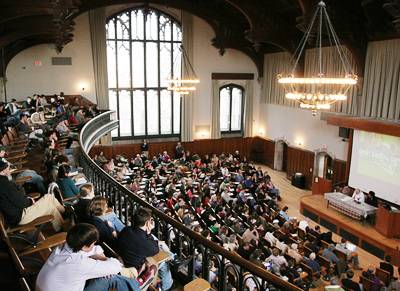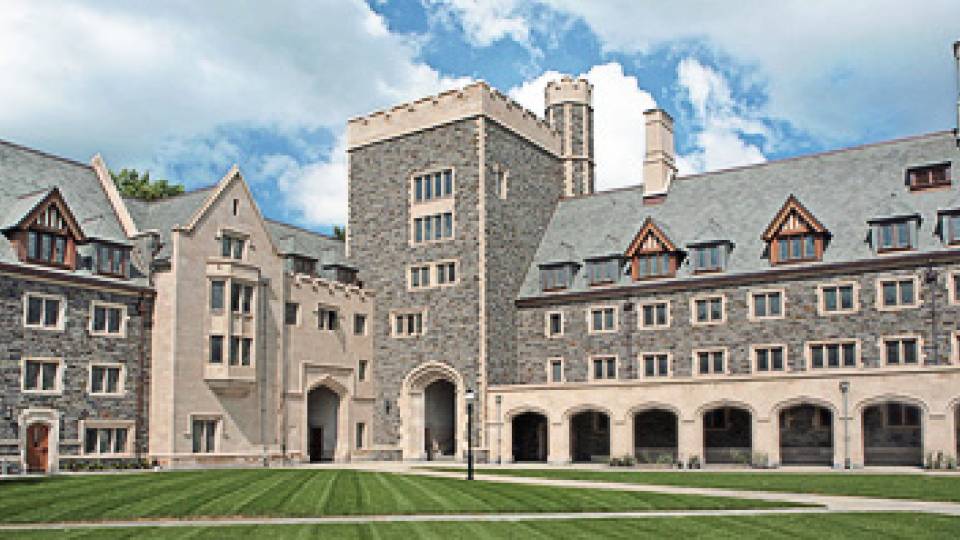
This year marks the 100th anniversary of McCosh Hall, which was built, according to former Princeton President Woodrow Wilson, as a “noble memorial to our beloved one-time leader” James McCosh(Link is external), who was the 11th president of Princeton.
- McCosh Hall, designed by Raleigh Gildersleeve in the Tudor Gothic style of architecture then dominant at Princeton, was the largest building on campus when it was built. It has a smooth limestone exterior and flying buttresses, which were then new to Princeton. Its “L” shape extends 400 feet along McCosh Walk and 100 feet along Washington Road.

- The building is adorned with a pair of tigers resting on a buttress as well as an enchanting array of other characters: twin owls, the masks of comedy and tragedy, a raven perched on a large head and a donkey who looks up from reading an engrossing book. Joining this assemblage is a goose wearing a mortar board and glasses, and a football player dressed in quilted pants, a laced shirt and a turned-up stocking cap.

- The building, which is now home to the Department of English(Link is external) and the Program in American Studies(Link is external), contains four large lecture rooms, 10 seminar rooms, eight classrooms and 51 offices.
- The lecture hall McCosh 50 has played host to visits by dozens of prominent figures in politics, science, literature and the arts. Most notably, Albert Einstein gave his renowned Stafford Little lectures on the theory of relativity in McCosh 50 in 1921, the year before he received the Nobel Prize. Scientists from all over the country packed the room for the five lectures, which were compiled and published under the title “The Meaning of Relativity.” Recent speakers have included novelist Chinua Achebe, comedian Steve Martin, political activist and class of 1955 member Ralph Nader, architect Cesar Pelli, actress Meryl Streep, Marina Mahathir, an activist for HIV/AIDS awareness, and Elie Wiesel, who won the Nobel Peace Prize in 1986.







